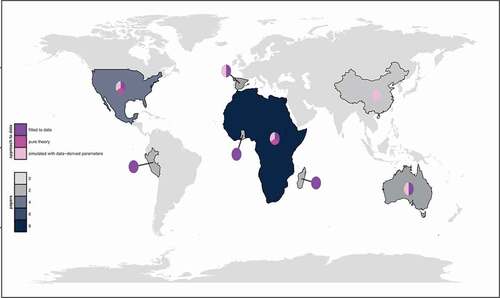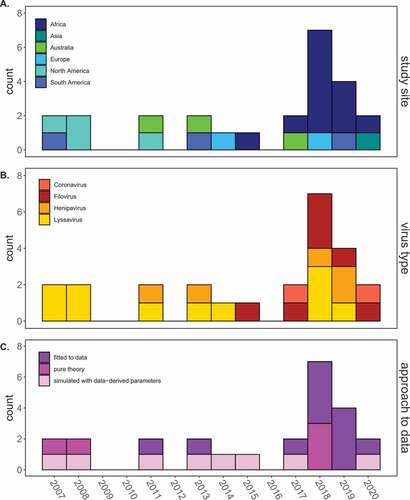Figures & data
Table 1. All published mechanistic models of virus dynamics in bat systems (2007–2020)
Table 2. Summary of data-fitted models investigating virus transmission dynamics
Figure 1. Distribution of bat virus modeling studies to date.

Figure 2. Trends in mechanistic modeling of bat-virus systems.

Figure 3. Universal compartmental model structure for models fitted to data.

